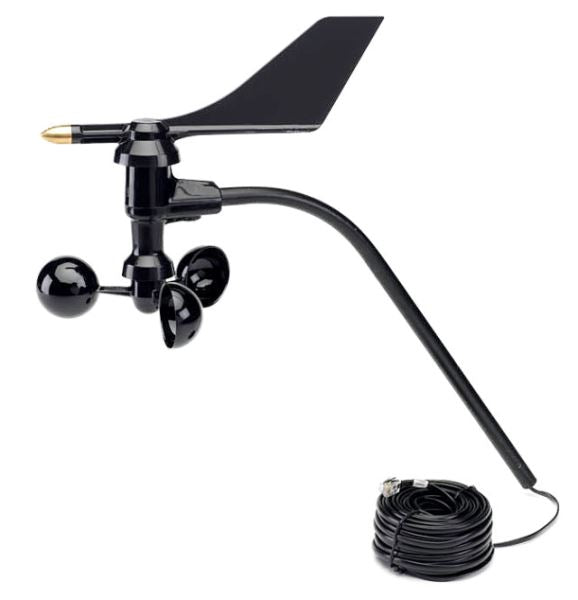The Duty of an Anemometer in Improving Safety And Security for Outdoor Activities
The Duty of an Anemometer in Improving Safety And Security for Outdoor Activities
Blog Article
Anemometers Revealed: Recognizing Their Importance in Ecological Surveillance and Safety Steps
The function of anemometers in environmental surveillance and safety steps is typically ignored, yet their relevance is undeniable. These tools have a lengthy history rooted in clinical inquiry and technical advancements, progressing to end up being essential tools in different fields. From weather forecasting to aviation security, anemometers play an important function in giving accurate data that educates decision-making procedures and boosts overall safety and security. Recognizing the ins and outs of anemometers introduces a world of critical insights that are fundamental to our understanding of the atmosphere and the steps we require to make certain security.
History of Anemometers
The advancement of anemometers can be traced back to the old worlds where simple wind determining tools were very first utilized. These very early wind measurement tools laid the structure for the development of much more innovative anemometers in time. Among the earliest known anemometers was the hemispherical cup anemometer designed by Leon Battista Alberti in the 15th century. This style was composed of four hemispherical mugs that collected wind energy, supplying a dimension of its intensity based on the rate of turning.
Over the years, innovations in modern technology led to the growth of even more modern-day anemometers, consisting of ultrasonic anemometers and laser Doppler anemometers, using boosted precision and efficiency in measuring wind speed and instructions. The background of anemometers showcases an exceptional trip of innovation and progress in the area of meteorology.
Sorts Of Anemometers
Throughout the area of weather forecasting, different sorts of anemometers have actually been developed to properly gauge wind rate and direction. One of the most usual type is the cup anemometer, which is composed of 3 or four mugs installed on straight arms that revolve with the wind. As the cups rotate, the rate at which they turn is directly symmetrical to the wind rate. Another extensively utilized type is the vane anemometer, which includes a tail or fin that aligns itself with the wind direction. This placement allows the gadget to identify the wind direction. Sonic anemometers make use of ultrasonic signals to determine wind rate and direction properly. They are commonly made use of in research study applications as a result of their high accuracy. Hot-wire anemometers operate based upon the principle that the cooling impact of wind on a heated wire is symmetrical to the wind speed. These anemometers are ideal for measuring reduced wind speeds with high precision. Each kind of anemometer has its toughness and is chosen based upon the specific requirements of the monitoring task handy.
Applications in Meteorology
Having reviewed the numerous kinds of anemometers utilized in meteorology for determining wind rate and instructions, it is necessary to explore their functional applications in the area. Anemometers play a vital duty in weather forecasting by providing accurate and real-time data on wind conditions (anemometer). Meteorologists utilize anemometers to keep an eye on wind speed and direction to forecast climate patterns, concern cautions for extreme climate occasions like storms, tornadoes, and tornados, and assess weather for aeronautics safety and security
In weather forecasting, anemometers Visit Your URL assist in understanding local and regional wind patterns, which are important for forecasting weather condition adjustments and figuring out climatic patterns. These gadgets are likewise used in study to examine microclimates, urban heat islands, and air pollution diffusion. Furthermore, anemometers are employed in farming to optimize crop monitoring methods, such as irrigation and chemical application, based on wind problems.
Relevance in Air Travel Safety
An integral element of guaranteeing aviation safety and security hinges on the meticulous tracking of wind conditions using anemometers. Anemometers play a critical duty in air travel by providing real-time information on wind rate and direction, assisting pilots in making notified choices during landing, liftoff, and flight. Solid and unpredictable winds can substantially impact aircraft procedures, making it necessary for air travel authorities to rely upon accurate wind measurements to make sure the safety of passengers and team.

In the vibrant environment of aeronautics, where even minor adjustments in wind rate and instructions can have extensive impacts, anemometers stand as important devices for advertising risk-free and safe and secure flight.
Role in Environmental Research Study
Anemometers play an important function in environmental research study by providing crucial information on wind rate and instructions. By properly gauging wind attributes, anemometers aid scientists analyze the movement of toxins in the air, evaluate the impact of industrial emissions, and predict the spread of pollutants in the setting.


Final Thought
In final thought, anemometers have played see a crucial function in ecological tracking and safety actions. Recognizing the importance of anemometers is essential for accurately measuring wind rate and direction, which is essential for predicting climate patterns, making certain safe air travel procedures, and conducting environmental studies.
One of the earliest known anemometers was the hemispherical mug anemometer invented by Leon Battista Alberti in the 15th century. Over the years, developments in innovation led to the growth of more modern anemometers, including ultrasonic anemometers and laser Doppler anemometers, supplying increased accuracy and efficiency in gauging wind speed and instructions. Hot-wire anemometers operate based on the principle that the cooling result of wind on a heated cable is symmetrical to the wind speed. Meteorologists utilize anemometers to monitor wind speed and instructions to anticipate climate patterns, problem cautions for extreme weather events like tornados, hurricanes, and twisters, and assess atmospheric problems for aeronautics safety and security.
Understanding the importance moved here of anemometers is important for precisely measuring wind speed and instructions, which is crucial for forecasting climate patterns, ensuring risk-free air travel operations, and carrying out environmental research studies. (anemometer)
Report this page